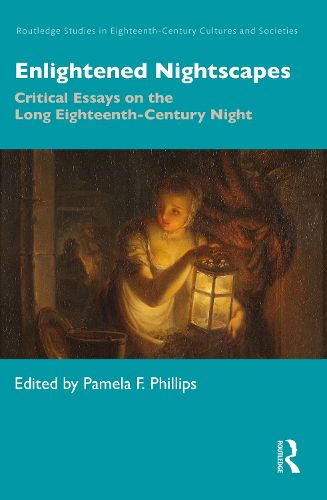Readings Newsletter
Become a Readings Member to make your shopping experience even easier.
Sign in or sign up for free!
You’re not far away from qualifying for FREE standard shipping within Australia
You’ve qualified for FREE standard shipping within Australia
The cart is loading…






This volume brings together eleven case studies that address how the night became visible in the long and global eighteenth century through different mediums and in different geographical contexts.
Situated on the eve of the introduction of artificial lighting, the long eighteenth century has much to say about night's darkness and brilliance. The eighteenth century has been bound up epistemologically with images of light, reason, and order. Night and day, light and darkness, reason and mystery, however, are not necessarily at odds in the eighteenth century. In their analysis of narratives, poetry, urban spaces, music, the visual arts, and geological phenomena, the essays provide various frameworks to examine the representation, treatment, and meaning of the enlightened night.
The transnational and multidisciplinary nature of the volume presents a survey of the research currently being done in the field of the long eighteenth-century night. This collection contributes to an ongoing exercise that questions the accepted definitions of the Enlightenment, and by bringing Eighteenth-Century Studies into dialogue with Night Studies, it enriches the critical conversation between these lines of research.
$9.00 standard shipping within Australia
FREE standard shipping within Australia for orders over $100.00
Express & International shipping calculated at checkout
This volume brings together eleven case studies that address how the night became visible in the long and global eighteenth century through different mediums and in different geographical contexts.
Situated on the eve of the introduction of artificial lighting, the long eighteenth century has much to say about night's darkness and brilliance. The eighteenth century has been bound up epistemologically with images of light, reason, and order. Night and day, light and darkness, reason and mystery, however, are not necessarily at odds in the eighteenth century. In their analysis of narratives, poetry, urban spaces, music, the visual arts, and geological phenomena, the essays provide various frameworks to examine the representation, treatment, and meaning of the enlightened night.
The transnational and multidisciplinary nature of the volume presents a survey of the research currently being done in the field of the long eighteenth-century night. This collection contributes to an ongoing exercise that questions the accepted definitions of the Enlightenment, and by bringing Eighteenth-Century Studies into dialogue with Night Studies, it enriches the critical conversation between these lines of research.